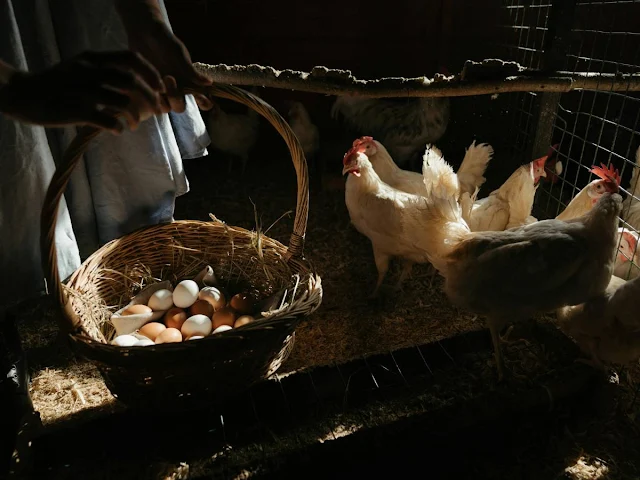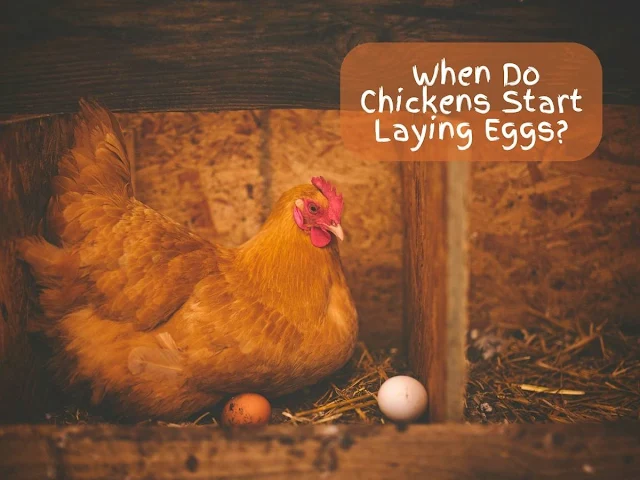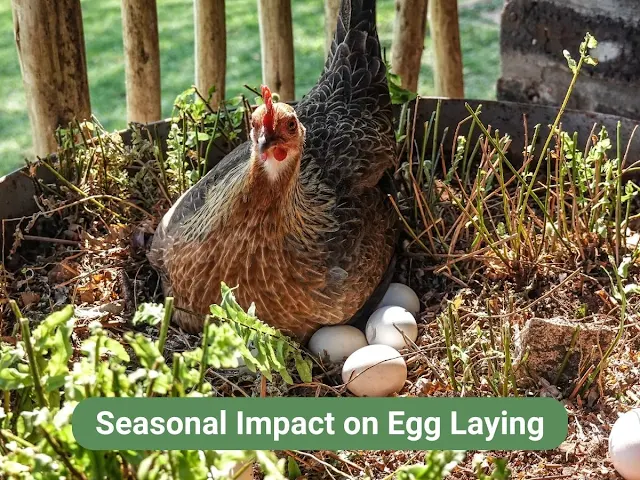Early Egg-Laying Chickens and How to Optimize Their Productivity
Discover the top early-laying chicken breeds that start laying eggs as early as 16 weeks, and learn about the factors that affect their egg-laying capabilities, including diet, environment, and genetics.
 |
| How to Get More Eggs |
Early-Laying Chicken Breeds
In addition to Leghorn chickens, ISA Browns, and Golden Comets, and other chicken breeds are also known for their early egg-laying capabilities. For example, Australorps are recognized for their quick start to egg production, with some chickens beginning to lay eggs as early as 16 weeks old. This early maturity makes them a popular choice for those seeking early egg-laying breeds.
YouTube Video: When Do Chickens Start Laying Eggs?
Also Barred Rocks, another chicken breed known for its early egg-laying abilities, typically starts laying around 18-20 weeks of age. These early egg layers offer backyard farmers a valuable advantage by providing a consistent supply of eggs at a relatively early age, helping with efficient and productive poultry operations. All of these breeds have unique qualities, making them highly sought-after options for everyone looking to establish a reliable egg-laying flock.
 |
| When Do Chickens Start Laying Eggs? |
Factors Affecting Egg-Laying Capabilities
When it comes to a chicken's egg-laying capabilities, several factors come into play, significantly impacting the timing and productivity of egg production. One such factor is diet, which plays a crucial role in ensuring that hens have the necessary nutrients for optimal egg production. A well-balanced diet rich in protein, vitamins, and minerals is essential for supporting the development of healthy eggs. For instance, calcium is crucial for the formation of strong eggshells, emphasizing the importance of providing hens with access to calcium-rich feed or supplements to support their egg-laying capabilities.
Additionally, the environment in which chickens are raised can also influence their egg-laying capabilities. Factors such as the cleanliness of the coop, availability of nesting boxes, and overall comfort and security can impact a hen's stress levels, subsequently affecting its egg-laying behavior. Creating a stress-free and comfortable environment for the chickens can contribute to regular and consistent egg production. Furthermore, genetics play a significant role in determining a chicken's predisposition for prolific egg-laying. Certain breeds are inherently more inclined towards early maturity and fast egg production, making them favorable choices for egg farmers seeking high productivity from their flocks.
In conclusion, understanding the multifaceted impact of diet, environment, and genetics on a chicken's egg-laying capabilities is crucial for ensuring optimal egg production. By providing a nutritious diet, a comfortable environment, and selectively breeding for desirable traits, chicken farmers can effectively support and enhance the egg-laying capabilities of their flocks, ultimately contributing to a successful and sustainable poultry operation.
Best Chicken Breeds For Laying Eggs
Optimal Care for Early-Laying Breeds
Early-laying chicken breeds require specific care and attention to ensure optimal egg production. Proper nutrition is essential for these breeds to reach their full egg-laying potential. It's crucial for poultry keepers to provide a balanced diet rich in essential nutrients such as protein, vitamins, and minerals to support the development of healthy eggs. For example, incorporating calcium-rich foods like oyster shells or crushed eggshells into the chickens' diet can contribute to strong eggshells, reducing the risk of egg breakage and providing essential nutrients for the hens during the egg-laying process.
In addition to diet, being attentive to physical and behavioral indicators is paramount. Poultry enthusiasts should monitor signs that a chicken is ready to lay eggs, such as squatting, comb and wattle development, and increased vocalization. These behavioral and physical changes signal the readiness of the hens to begin laying eggs. By recognizing these indicators, chicken keepers can provide the necessary support and care to ensure a smooth transition into egg production for their early-maturing chickens. Furthermore, creating a stress-free environment, maintaining proper lighting conditions, and ensuring access to clean water are vital factors in promoting optimal egg production from early-laying breeds. Understanding and addressing these nuances will enable poultry keepers to maximize the egg-laying potential of their early-maturing chickens and contribute to a successful and rewarding chicken farming experience.
Top Egg-Laying Chicken Breeds
When it comes to the top egg-laying chicken breeds, there is a diverse selection of options that are highly valued for their exceptional egg-laying capabilities. For example, the Rhode Island Red is renowned for consistently laying a high number of eggs, with some hens producing well over 300 eggs per year. Similarly, the Leghorn breed is known for its remarkable egg-laying abilities, with hens often starting to lay eggs as early as 18 weeks old. This early maturity and fast egg production make Leghorns a popular choice for individuals looking to establish reliable egg production in their flock.
In addition to specific breeds like the Rhode Island Red and Leghorn, other breeds such as the Plymouth Rock and Sussex also stand out for their reliable and prolific egg production. These breeds are favored for their ability to lay a substantial number of eggs throughout the year, making them valuable additions to any egg-producing operation. Moreover, the Buff Orpington breed is esteemed for not only its egg-laying capabilities but also its calm and friendly disposition, making it a popular choice for backyard chicken enthusiasts seeking a dual-purpose breed.
Factors such as diet, age, and access to daylight can significantly influence the egg production of these top breeds. For instance, providing a well-balanced diet with adequate nutrients is crucial for promoting healthy egg production, while ensuring access to natural light or supplemental lighting can help maintain consistent egg-laying patterns. Understanding the unique characteristics and requirements of each of these top egg-laying breeds is essential for poultry enthusiasts and farmers seeking to optimize their egg production and cultivate a thriving flock.
Where to Think About When Building a Chicken Coop
Seasonal Impact on Egg Laying
The timing of hatching and the season can significantly affect when pullets start laying eggs. For instance, chickens hatched in spring will typically begin laying according to the specific timelines associated with their breeds. On the other hand, those hatched in the fall might delay laying until the following spring, highlighting the seasonal impact on egg production.
For example, if someone raises Leghorn chickens, known for their early maturity and fast egg production, the timing of hatching and the season can influence when these chickens start laying. If the Leghorn pullets are hatched in late winter or early spring, they are likely to begin laying eggs earlier than those hatched in late summer or fall. This exemplifies how the seasonal factor can affect the commencement of egg-laying in different chicken breeds, shedding light on the practical implications for poultry farmers and backyard chicken enthusiasts.
Besides to the seasonal influence, things like feed and daylight hours are pivotal in determining the timing of egg production in chickens. Ensuring that pullets receive appropriate nutrition and are exposed to the right amount of daylight can positively impact their egg-laying capabilities. Understanding these seasonal and environmental factors is essential for effectively managing and optimizing egg production in various chicken breeds.
 |
| Seasonal Impact on Egg Laying |
Essentials for Early Laying Chickens
When it comes to early-laying chicken breeds, it's essential to consider the specific attributes of these breeds and the various factors that influence their egg-laying capabilities for successful poultry farming. For instance, Leghorn chickens are known for their early maturity and fast egg production, starting as early as 18 weeks. This highlights the significance of choosing the right breeds for those seeking early egg production. Additionally, ISA Browns and Golden Comets are also popular for their quick egg-laying abilities, starting at around 16 weeks old. These specific examples emphasize the diversity of early-laying chicken breeds and the age ranges at which they begin egg production.
Also, it's crucial to understand the impact of factors such as diet, environment, and genetics on a chicken's egg-laying capabilities. For example, diet plays a significant role in encouraging early egg laying, and providing a balanced diet is essential for healthy egg production. Moreover, light and stress also play crucial roles in influencing the timing of egg production, with factors such as daylight hours affecting the egg-laying process. By comprehending these factors, poultry enthusiasts can create an optimal environment for their chickens to thrive and lay eggs consistently. Therefore, it's evident that a holistic understanding of the specific attributes of early-laying breeds and the factors that influence their egg-laying capabilities is paramount for successful poultry farming.
For more information about Chickens and Funny Chicken Videos; Check Out Boyd's HomeStead Adventures at BIG Feathers Farm on YouTube ~ @BIGFeathersFarm
